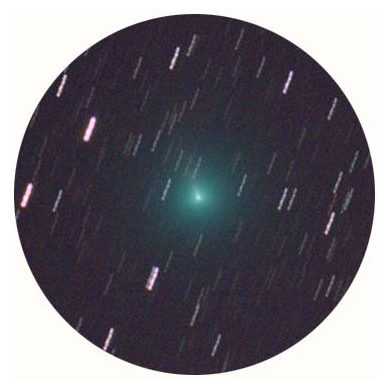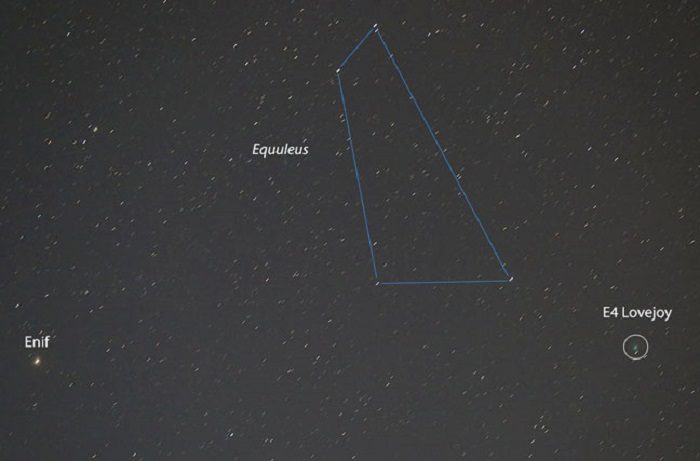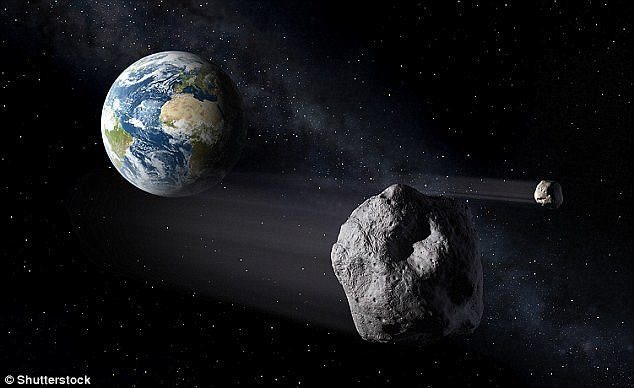Terry Lovejoy's new comet has gone from faint to bright in just three weeks and is now a tempting binocular target at dawn.
© Terry LovejoyComet C/2017 E4 Lovejoy was discovered on March 9th by Australian amateur Terry Lovejoy. It's his 6th discovery and seen here on March 25th.
Who doesn't love a comet that exceeds expectations? That's exactly what's happening with Terry Lovejoy's latest discovery,
C/2017 E4 Lovejoy.
Discovered on March 10th at magnitude +12, early observations suggested a peak magnitude of +9 in mid-April, assuming it didn't crumble apart en route to an April 23rd perihelion.
Forget that.
This fuzzball's already at magnitude +7 - 7.5 and a snap to see in 50-mm binoculars.I know because I got up Wednesday morning (March 29th) shortly before the start of dawn, pointed my 10×50 glass just below the figure of Equuleus, the Little Horse, and saw a small, dense ball of glowing fuzz without even trying.
Comet 41P/Tuttle-Giacobini-Kresak — now circumpolar in Ursa Major — shines at a similar brightness, but it's larger and less condensed and therefore not as easy to see as Lovejoy.

© Bob KingComet Lovejoy captured with a 135-mm telephoto lens (f/2.8, ISO 2500, 10-second exposure) on Wednesday morning March 29th, when it entered the small constellation Equuleus. Though small at this focal length, the comet's blue-green color is a dead giveaway.
A little more than a week ago, Comet Lovejoy glowed at magnitude +10 - 11; a few days ago it was at +9. Given its meteoric rise in brightness, observers are anticipating the comet to crest to magnitude +6 around perihelion as it describes a roller coaster arc across Pegasus and Andromeda. Twice it passes bright deep-sky objects: the bright globular cluster M15 on
April 1st and the Andromeda Galaxy on
April 20 - 22. Another easy time to spot it will be on
April 8 - 9 alongside β Pegasi in the northwest corner of the Great Square.


Comment: Earlier on the day of this sighting (March 22nd) another meteor fireball was observed streaking across the U.S. East coast.